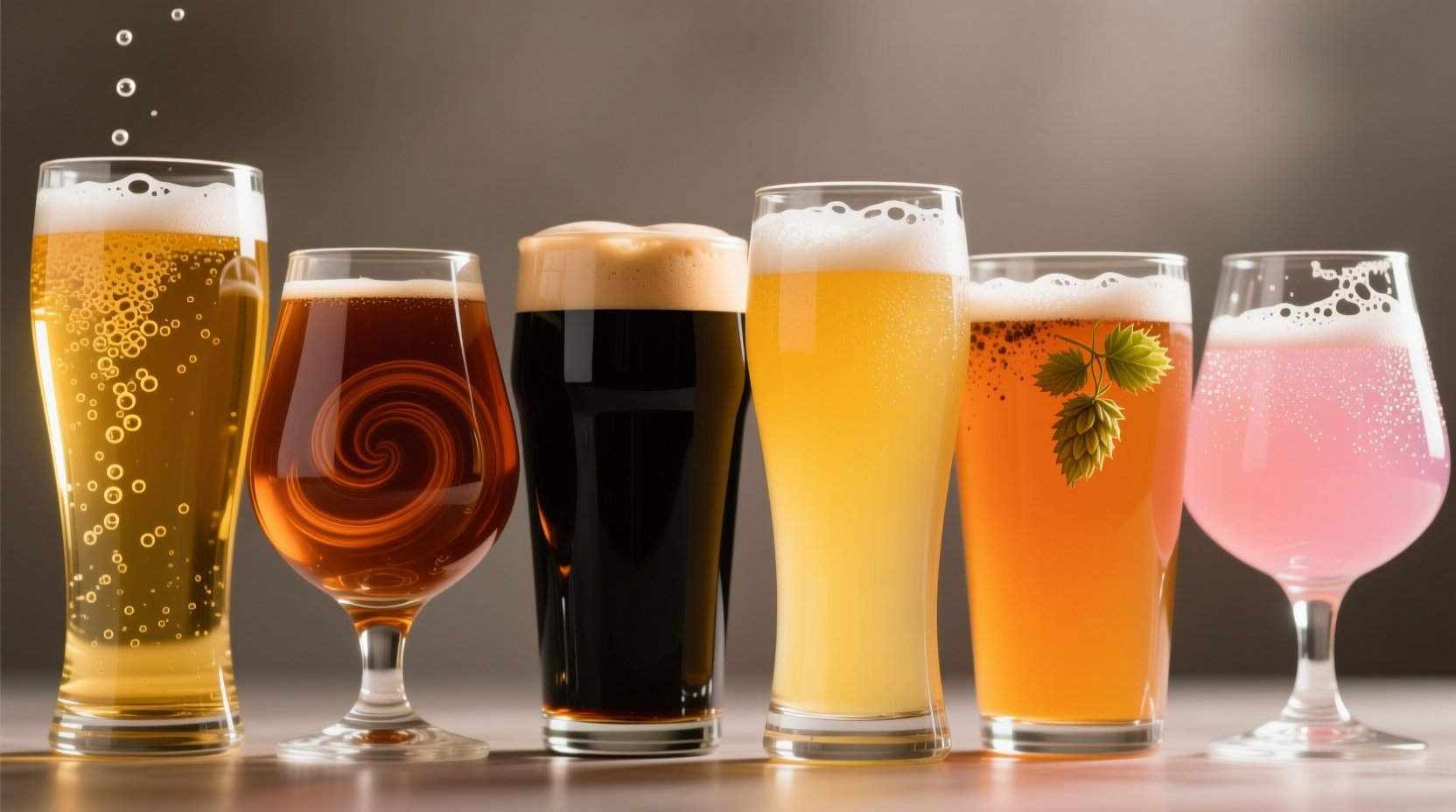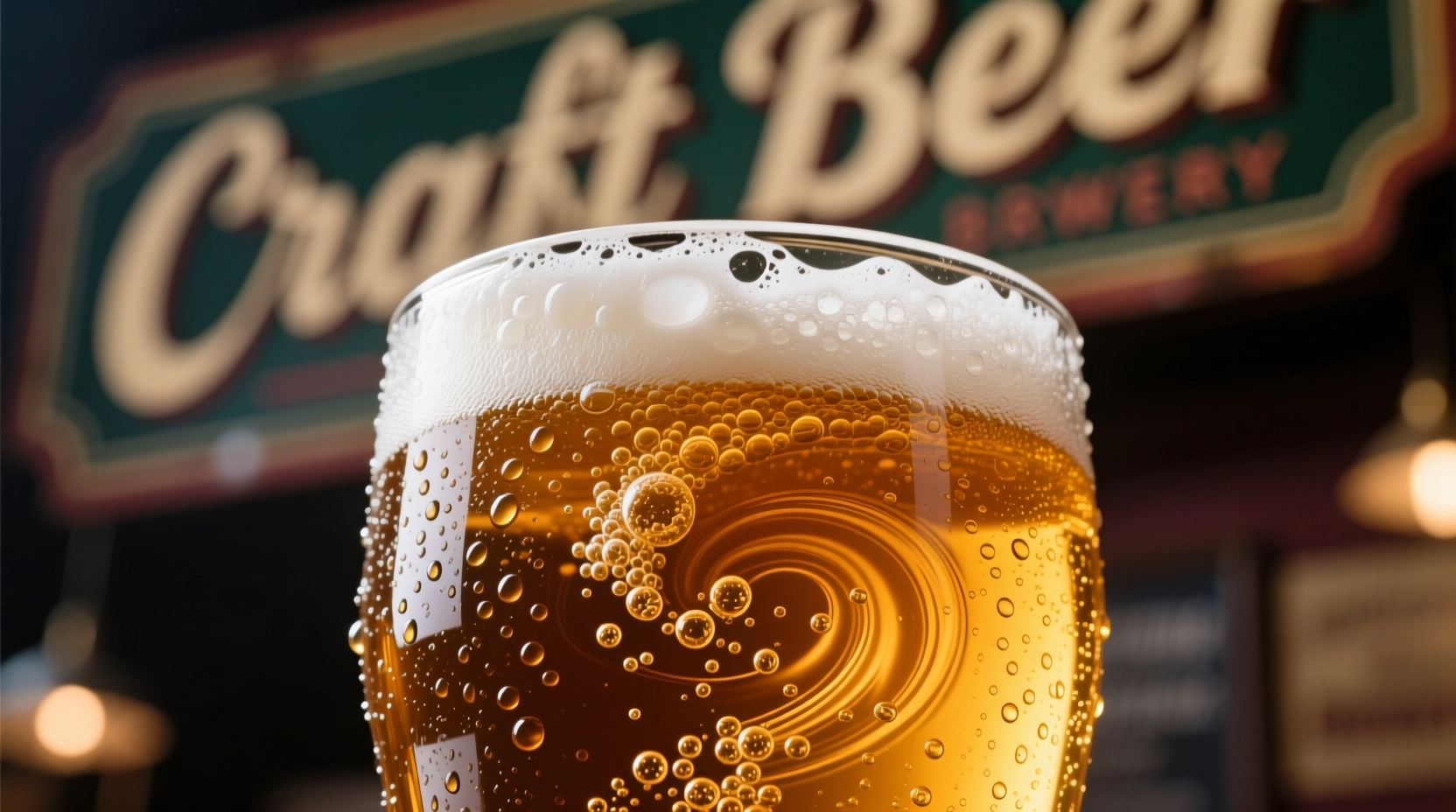Ever wondered what does beer taste like before taking your first sip? Understanding beer's flavor profile helps you navigate the vast world of brews with confidence. Whether you're curious about why does beer taste bitter or want to identify different beer taste profiles, this guide breaks down exactly what to expect from your glass.
The Core Taste Components of Beer
Beer's flavor profile stems from four fundamental elements working in harmony:
- Maltiness - Provides sweetness, breadiness, and caramel notes from barley or other grains
- Bitterness - Comes from hops, balancing the malt sweetness with varying intensity
- Carbonation - Creates texture and carries flavors across your palate
- Alcohol warmth - Contributes subtle heat, especially in higher-ABV styles
According to the Beer Judge Certification Program, these elements combine to create over 100 distinct flavor descriptors that trained tasters use to evaluate beers. The perception of what makes beer taste the way it does varies significantly based on individual taste sensitivity and previous flavor experiences.

How Brewing Ingredients Shape Flavor
Three primary ingredients determine beer's fundamental character:
Malt Varieties and Their Impact
Base malts like Pilsner provide clean sweetness, while specialty malts add complexity:
- Crystal malts → caramel, toffee, raisin notes
- Roasted malts → coffee, chocolate, burnt characteristics
- Wheat malts → bready, creamy texture
Hop Characteristics Across Styles
Hops contribute both bitterness and aromatic qualities. The Brewers Association identifies these primary hop profiles:
| Hop Variety | Flavor Profile | Common Beer Styles |
|---|---|---|
| Cascade | Grapefruit, floral | American Pale Ale, IPA |
| Chinook | Pine, spice | Imperial IPA, Stout |
| Saaz | Earthy, herbal | Pilsner, Belgian Ales |
| Galaxy | Tropical fruit, passionfruit | Hazy IPA, Pale Ale |
Beer Style Flavor Profiles Explained
Understanding beer flavor characteristics explained by style helps set proper expectations. Here's what to anticipate from popular categories:
Lagers and Pilsners
Clean, crisp, and refreshing with subtle malt sweetness balanced by mild hop bitterness. Expect light grain notes with possible hints of:
- Hay or grass (Noble hop varieties)
- Mineral qualities (from water profile)
- Faint floral notes
These styles answer the question what does beer taste like for beginners most directly, offering approachable flavors without extreme bitterness.
India Pale Ales (IPAs)
Characterized by pronounced hop bitterness and aromatic intensity. Modern interpretations vary:
- West Coast IPAs: Sharp bitterness, pine/citrus notes, dry finish
- Hazy IPAs: Softer bitterness, juicy tropical fruit flavors, creamy mouthfeel
- Imperial IPAs: Intense bitterness, higher alcohol warmth, complex layered flavors
Stouts and Porters
Dark beers showcase roasted malt complexity with flavors reminiscent of:
- Dark chocolate and coffee (from roasted barley)
- Caramel and toffee (from crystal malts)
- Vanilla or coconut (from barrel-aging)
- Creamy texture (from nitrogen infusion)
Why Individual Perception Varies
Your personal experience of what does beer taste like depends on several factors:
Genetic Taste Sensitivity
Research from ScienceDirect shows that 25% of people are "supertasters" who perceive bitterness more intensely. This explains why some find IPAs unpleasantly bitter while others enjoy the hoppy character.
Cultural and Experiential Influences
Your previous food and drink experiences shape how you interpret beer flavors. Someone familiar with coffee might easily identify roasted notes in stouts, while others might describe the same beer as "burnt" or "medicinal."
Serving Temperature Matters
Beer served too cold masks flavor complexity. The Craft Beer Institute recommends these serving temperatures:
- Lagers: 38-45°F (3-7°C)
- Ales: 45-55°F (7-13°C)
- Stouts/Barrel-aged: 50-57°F (10-14°C)
Developing Your Beer Palate
Learning how to describe beer flavors improves with practice. Follow these professional tasting techniques:
- Look - Note color, clarity, and head retention
- Smell - Identify primary aromas before tasting
- Sip - Let beer coat your entire mouth
- Consider - Evaluate balance between malt, hops, and other elements
- Finish - Note aftertaste and lingering flavors
Start with milder styles like amber ales or cream ales before progressing to more intense varieties. Keeping a tasting journal helps track your evolving preferences and recognition of specific flavor notes.
Common Misconceptions About Beer Taste
Several myths persist about what does beer taste like:
- "All beer tastes bitter" - While hops provide bitterness, many styles emphasize malt sweetness
- "Dark beers are always strong" - Color comes from malt roasting, not alcohol content
- "Craft beer is too complex" - Many craft breweries make approachable sessionable styles
- "Beer causes worse hangovers than wine" - Hangovers relate more to congeners and dehydration than the beverage type
Understanding these distinctions helps set realistic expectations when exploring different beer varieties.
Practical Tips for First-Time Beer Tasters
If you're wondering what does beer taste like before trying it, these strategies help:
- Start with lighter styles like blonde ales or kölsch
- Avoid extremely cold temperatures that mask flavors
- Pair with complementary foods (mild cheese with pale ales, chocolate with stouts)
- Take small sips and let the beer warm slightly in your mouth
- Don't judge based on first impressions - flavors evolve as you drink
Remember that personal preference develops with experience. What seems overwhelming initially often becomes enjoyable with repeated exposure.











 浙公网安备
33010002000092号
浙公网安备
33010002000092号 浙B2-20120091-4
浙B2-20120091-4